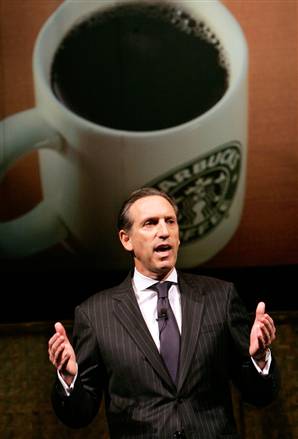 Howard Schultz is the founder and CEO of Starbucks and evidently he likes to tell this story about milk:
Howard Schultz is the founder and CEO of Starbucks and evidently he likes to tell this story about milk:
Starbucks uses a lot of milk. To improve the quality of the millions of lattes and cappuccinos Starbucks serves, Starbucks “forbade what had become the common practice of resteaming milk. That meant baristas were pouring millions of dollars of leftover milk down the drain. As store managers for the first time began thinking about how to operate more efficiently, an idea emerged. It was simple, obvious, and made everyone wonder why no one had thought of it before: They could put etched lines in the steaming pitchers so that the baristas would know exactly how much milk to use for each size drink. Before, they just guessed. ‘The celebration of that line in the halls of Starbucks has become a metaphor,’ says Schultz. ‘How many other lines can we find? We’ve found a lot because no one was ever looking. The people who have found those lines have become part of the folklore.’” (Business Week, August 19, 2009)
Where can you “find the line”?
What small improvements could you institute, in your personal or professional life, that could, over time, have a meaningful, impressive, significant, cumulative impact?
I sincerely believe that improvements frequently come 1%, even .1%, at a time. In our search for the “magic bullet,” the technological breakthrough that will solve many problems in a single stroke, we overlook many prosaic opportunities that are much more readily available and whose cumulative impact can rival the most dazzling hi-tech innovation.


0 Comments